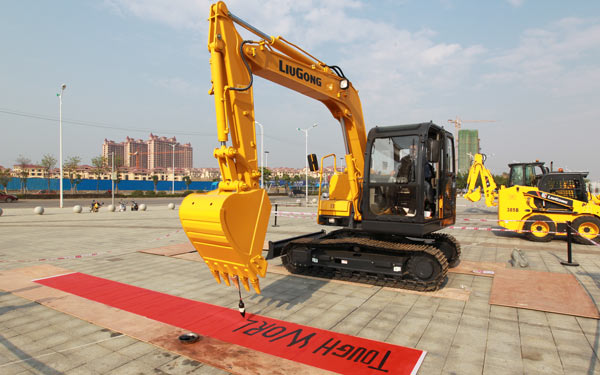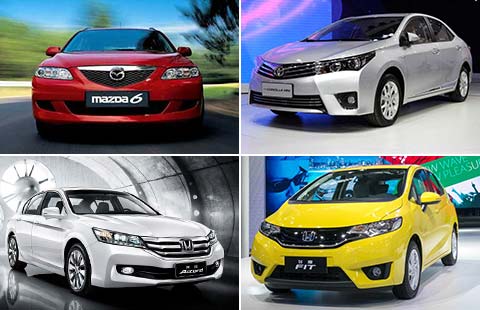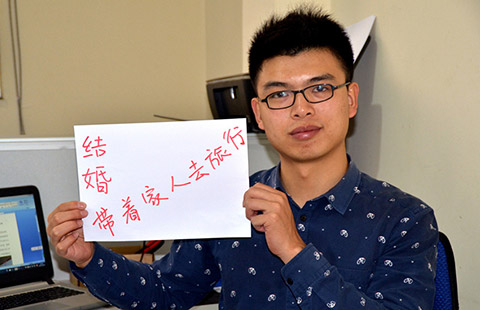China moves up the exports value chain
By Gao Yuan,Zhong Nan and Lyu Chang (China Daily) Updated: 2016-01-07 07:47
 |
|
An excavator made by Liuzhou-based LiuGong Machinery Co, in South China's Guangxi Zhuang autonomous region, performs calligraphy art. [Photo/China Daily] |
"These technologies are also promoting improvements in planning and construction, management and operations, livable environments, giving a human touch to cities around the world."
In Central Asia, Huawei is providing products and services to a number of oil and gas companies, including Beineu Bozoi Shymkent Gas Pipeline in Kazakhstan, Asia Trans Gas in Uzbekistan and Amu Darya in Turkmenistan. The area is the world's third-largest oilfield and plays an important role in the global oil and gas industry.
The Chinese company said its "digital pipeline" technology, which improves efficiency, reduces energy consumption, and enhances operational safety of oil pipes by researching operational data, has been applied to a total of 4,623 kilometers of gas pipelines in Central Asia.
Huawei's key projects include the Kazakhstan-China natural gas pipeline, called the AB line, which is the world's first and longest digital natural gas pipeline.
Mike Han, president of Huawei's Central Asia and Caucasia Enterprise Business, said: "Since we established our business in Central Asia in 1997, Huawei has been providing competitive communication products and services to telecom carriers, enterprises, and consumers by bringing cutting-edge communications technologies and products."
In the consumer telecom market, Huawei sells smartphones in emerging Asian markets, but it has been outpaced by some of the smaller vendors.
For instance, Xiaomi Corp, a Beijing-based smartphone maker, sells its own smartphones in India, Indonesia and other Asian countries via local shopping websites.
In May 2015, Xiaomi partnered with Taiwan-based contract manufacturer Foxconn Technology Group to open its first overseas smartphone manufacturing plant near the southern Sri City in Andhra Pradesh state.
It is the five-year-old company's first overseas manufacturing site.
Lenovo Group Ltd, the biggest personal computer maker, quickly followed suit. It has started to assemble devices in the eastern port city of Chennai. Meantime, Lenovo is aiming to let the newly acquired Motorola Mobility unit to tap into the high-end smartphone markets such as Singapore, Japan and South Korea.
Fiberhome Technology Group, a network equipment maker that develops metropolitan broadband Internet Protocol communications technologies, said the expanding demand for optical fiber cables in overseas market, provides a good opportunity for the Wuhan-based company.
Lyu Weiping, vice-president of Fiberhome, said its technology advantage is helping the company edge out global competition. "We tailor-make products for different overseas markets depending on the demand and factors like population density," Lyu said.
Fiberhome said its 2014 export revenue exceeded 2.4 billion yuan ($305 million), a 90 percent increase year-on-year.
"China's Belt and Road Initiative has been fueling the sales," said Lyu. The company said it will focus on growth in neighboring markets and attract research talents in the region. The Belt and Road strategy, the brainchild of the central government, encourages exports of high-tech products.
Machinery
With growth in the Chinese market stabilizing, some heavy equipment manufacturers struck out on their own, seeking to enter Asian markets yet to open up.
The Liuzhou-based LiuGong Machinery Co, a major player in the heavy machinery market, said its products such as cranes and excavators have been exported to Southeast Asia a decade ago and are largely used in government projects in the fields of transportation, hydraulic engineering and infrastructure.
"Countries in Southeast Asia such as Thailand and Cambodia are our target market and we have been in Thailand for more than a decade, because those markets have huge potential for growth with increasing demand for infrastructure construction," said Zeng Guang'an, president of LiuGong.
The Chinese heavy machinery market, which used to be dominated by foreign players, had started to pick up steam around 2000 and saw its golden era after 2008 when China rolled out a 4-trillion-yuan stimulus package.
- Vanke falls 9.17% as trading resumes in HK after three-week suspension
- Alibaba's Ant Financial raising more funds, planning IPO
- Govt eyes cross-border e-commerce to boost exports
- Beijing to host first meeting of AIIB in June
- China moves up the exports value chain
- Wanda to invest $2.3b in 3 UK-run hospitals
- Apple losing its 'edge' as iPhone sales nosedive
- Google spreads huge net in China's jobs market

















